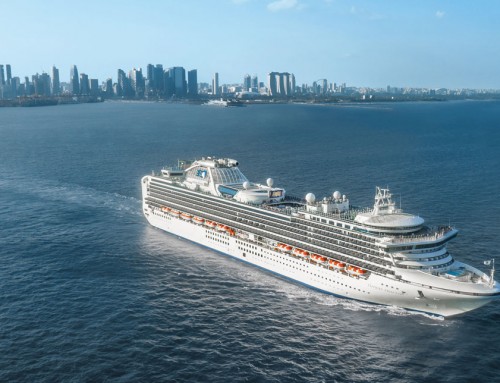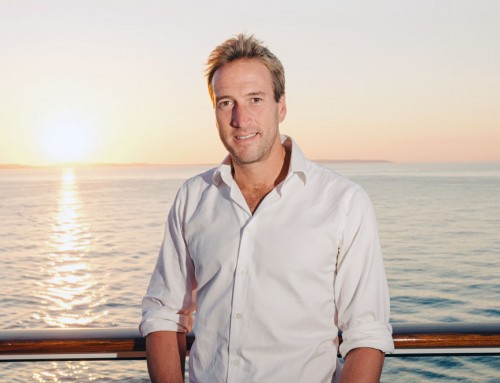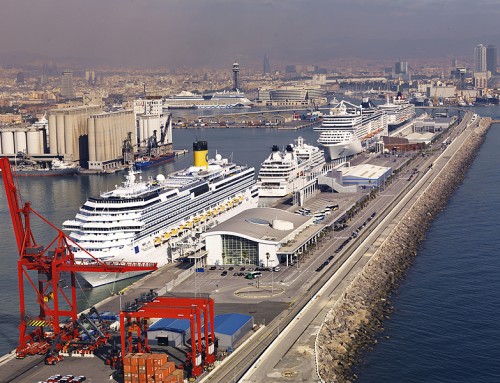The clues were there from the start. A sprinkling of snow on the north-facing slopes of the barren Gobi Desert as our Boeing 747 made its descent to Beijing Airport. The frozen waterways running through the airport and the city.
But we were ushered seamlessly from the terminal building into a car for the three-hour drive to Tianjin, and felt the chill air only now and again when the driver wound down his window at the frequent toll points along the eight-lane highway.
Transit through the international cruise terminal and Chinese passport control was quick and efficient, and it was only as we took our first steps off the covered gangway and onto the open promenade deck of Diamond Princess that the cold really struck us.
It was the “Beware of Ice” signs that did it. And the biting wind. Captain Bob Oliver has taken cruise ships to Antarctica three times, and he said he had never felt as cold as during the approach to Beijing this week.
My wife and I wasted no time getting comfortable in our Baja Deck cabin, and getting to know the ship again – we were last on board 18 months ago in Alaska.
After leaving Tianjin we had a day at sea to try to shake off the jet lag before arriving in the South Korean port of Busan, a bustling industrial city which concealed some attractive beaches between its container yards and soaring skyscraper apartment blocks.
A ship’s excursion seemed an easier alternative to independent exploration, and from the limited choice on offer I had booked a tour to the Haedong Yonggungsa Temple, a spectacular shrine at the bottom of a cliff by the sea, and well worth having to climb the 100 steps back to the car park.
Also on the itinerary was a visit to Dongbaekseom Island, home to a flying saucer-shaped building which was built for an economic summit in 2005 and now survives as a somewhat soulless visitor attraction. It’s rather as if London’s Olympic stadium were destined for a future welcoming only a daily procession of tourists once the last athletes have competed there this summer – surely not a prospect that Messrs Johnson and Coe would welcome.
The island has also become a country park, with a pine-planked walkway around its cliff edge, and a dramatic mermaid statue that would dwarf the equivalent in Copenhagen.
Tour guide Simon did his best with limited English to keep us informed, and it was worth persevering to extract the most from his narration. The language problem was amply illustrated the following day in Japan, when our guide told us of the difficulties encountered in a local bar by two Western drinkers who, every time they asked for the bill, were presented with two more beers.
We were in Nagasaki, another busy industrial port – its shipyards the birthplace of Diamond Princess – but a city which earned its place in history on August 9, 1945, when the second atomic bomb to be dropped in World War Two exploded 1,600 feet above its homes and factories, with devastating effect.
There were tours from the ship which did not involve visiting the Peace Memorial Park and the Atomic Bomb Museum, but it would have been churlish not to acknowledge one of the single most significant events of the 20th century.
Even with its collection of gilded statues presented in guilt by nations around the world, the park held little appeal in pouring rain. The museum, however, is a different matter. I was touched not so much by the industrial and ecclesiastical archaeology – twisted girders from factories and a reconstruction of the facade of Urakami Cathedral – but more by relics on a human scale.
A spectacle frame bent and melted almost beyond recognition, beer bottles welded together by the heat of the blast, and even more dramatically, a clump of glass which now contains the bones of the hand that was holding it. There are items of clothing, some scorched and burnt, some shredded by flying debris – and these are from victims more than a kilometre from Ground Zero and perhaps sheltered by the hilly terrain.
The artefacts and the photographs tell the story so dramatically that the propaganda section of the museum highlighting the effects of the nuclear age since 1945 is rendered almost superfluous.
There was plenty to think about as we returned to the ship, especially as the weather, and our guide’s insistence that there would be better and cheaper shopping later in the cruise, persuaded us to stay on board for the afternoon.
How many passengers, I wondered, were struck by the unfortunate coincidence of one of the groups providing entertainment on the ship. I think they are British – the girl singer certainly is – and they can reproduce almost every hit single you’ve ever heard and more besides. But their name, the Atomic Party Band, seems singularly inappropriate this week.





Leave A Comment